Unraveling the Intriguing World of Wagtails: A Comprehensive Exploration
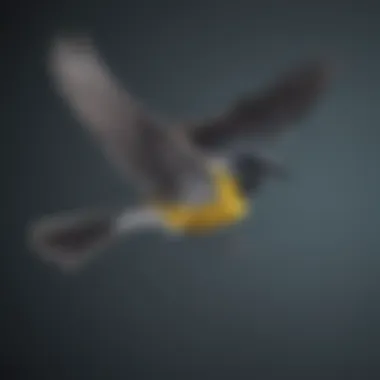
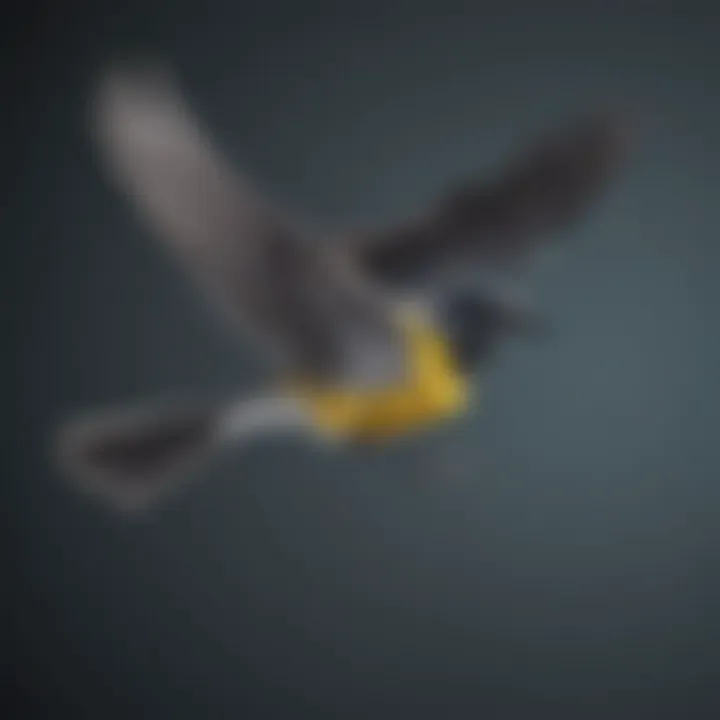
Introduction
Welcome to the captivating journey into the mysterious world of wagtails 🐦. These delightful avian creatures have long intrigued enthusiasts and researchers alike with their unique characteristics and behaviors. In this comprehensive guide, we will delve deep into the enigmatic realm of wagtails, uncovering their distinct physical features, habitats, communication methods, and their significance in the natural ecosystem.
Habitat and Distribution
Wagtails are predominantly found in open habitats across Europe, Asia, and Africa. These agile birds typically reside near water bodies such as rivers, lakes, and marshes, where they forage for insects with remarkable precision. Their habitat preference reflects their close association with aquatic environments and open spaces, making them a common sight in urban parks and rural landscapes alike.
Niche Habitats and Adaptations
With their slender bodies and long tails, wagtails exhibit specialized adaptations for their foraging behavior. These avian wonders are adept at capturing flying insects mid-air, showcasing their agility and precision in hunting. Their distinctive tail wagging motion not only aids in insect detection but also adds a layer of complexity to their communication signals within their social groups. Moreover, wagtails are known to display migratory behaviors, with some species traveling significant distances during seasonal movements.
Vocalizations and Communication
Wagtails are renowned for their melodious calls and chirps that echo through their surrounding habitats. These vocalizations serve multiple purposes, including territorial defense, mate attraction, and cohesive bonding within their flocks. By deciphering the nuances of their vocal repertoire, researchers can gain valuable insights into wagtail behavior and social dynamics.
Significance in Ecology
As key insectivores, wagtails play a vital role in regulating insect populations in their ecosystems. By preying on insects that may otherwise damage crops or transmit diseases, wagtails contribute to the ecological balance of their habitats. Furthermore, their presence serves as an indicator of environmental health, reflecting the quality of freshwater ecosystems where they thrive.
Future Research and Conservation Efforts
Despite their resilience and adaptability, wagtails face various threats, including habitat loss, pollution, and climate change. Understanding the intricate interactions between wagtails and their environment is crucial for formulating effective conservation strategies to safeguard these charismatic birds and their habitats for future generations. By continuing to research and monitor wagtail populations, we can contribute to the preservation of biodiversity and promote sustainable coexistence between humans and wildlife.
Let us embark on this enlightening journey into the enigmatic world of wagtails, where every flutter of their wings unveils a new chapter in the intricate tapestry of nature.
Introduction to Wagtails
As we begin our exploration into the domain of wagtails, we are entering a realm that offers a fascinating glimpse into the avian world. Understanding wagtails is not merely about studying a type of bird; it's about unraveling the intricate web of nature's offerings and marveling at the unique characteristics that set these creatures apart. From their distinctive physical attributes to their intriguing behavioral patterns, each aspect of wagtails adds a layer of complexity to our understanding of the avian ecosystem.
Defining Wagtails
Taxonomic Classification
Delving into the taxonomic classification of wagtails opens a gateway to exploring their evolutionary history and biological significance within the broader avian taxonomy. Understanding where wagtails fit into the intricate web of avian classifications provides researchers with a roadmap to deciphering their genetic makeup, phylogenetic relationships, and ecological roles. The taxonomic classification not only aids in identifying different wagtail species but also sheds light on their adaptive strategies and evolutionary trajectories.
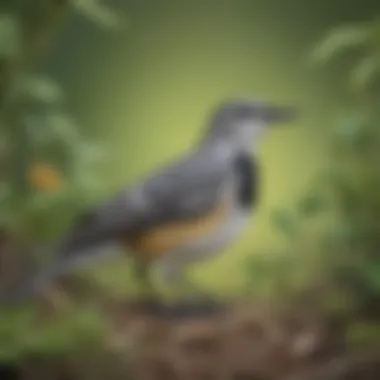
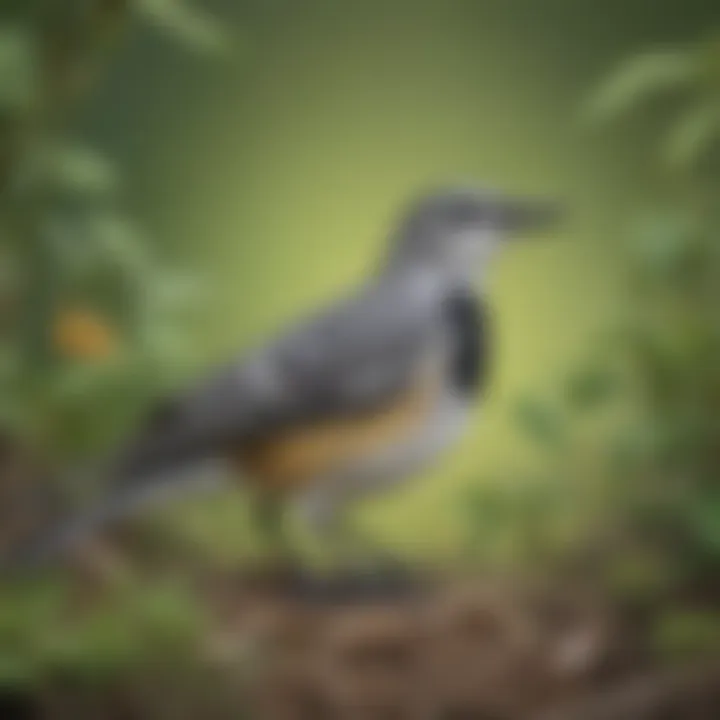
Physical Attributes
The physical attributes of wagtails serve as a key component in unraveling their ecological adaptations and survival strategies. From their distinct plumage patterns to their agile flight capabilities, each physical feature of wagtails contributes to their overall fitness and niche specialization. Exploring the physical attributes of wagtails is essential in understanding how these avian wonders have evolved to thrive in diverse habitats and ecoystems.
Behavioral Patterns
Examining the behavioral patterns of wagtails unveils a treasure trove of insights into their social dynamics, foraging behaviors, and communication methods. From their intricate courtship dances to their cooperative breeding strategies, wagtails exhibit a nuanced set of behaviors that define their interactions with conspecifics and the environment. Understanding these behavioral patterns is crucial in deciphering the complex social structures and adaptive behaviors that have enabled wagtails to thrive in varied habitats.
Historical Significance
Mythological References
Unraveling the mythological references associated with wagtails provides a glimpse into the cultural significance and symbolic representations of these avian beings across different civilizations. From being portrayed as messengers of gods to embodying symbols of luck and protection, wagtails have permeated various mythological narratives with their mystique and grace. Exploring these references not only enriches our understanding of wagtails' symbolic importance but also highlights the enduring impact of these birds on human imagination.
Cultural Symbolism
The cultural symbolism surrounding wagtails reflects the deep-rooted connections between humans and nature, showcasing how these avian creatures have been integrated into folklore, art, and belief systems. Whether revered as symbols of purity and resilience or depicted as omens of change and renewal, wagtails hold a prominent place in cultural representations worldwide. Examining the cultural symbolism associated with wagtails offers a gateway to exploring the intersections between human societies and the natural world, shedding light on the enduring influence of these avian marvels.
Ecological Adaptations
Embarking on an expedition into the enigmatic world of wagtails necessitates a thorough understanding of their Ecological Adaptations. These adaptations play a vital role in the survival and thriving of wagtails in diverse environments. From their choice of habitats to their feeding behaviors, ecological adaptations shape every aspect of a wagtail's life. By delving into this topic, we aim to unravel the intricate relationship between wagtails and their surroundings, shedding light on how these adaptations enable wagtails to navigate various ecological challenges and seize opportunities.
Habitats of Wagtails
Diverse Environments
In examining the Habitats of Wagtails, the concept of Diverse Environments holds paramount significance. Wagtails are known to inhabit a wide range of ecosystems, including forests, grasslands, wetlands, and urban areas. The versatility of wagtails in adapting to different environments showcases their remarkable resilience and versatility. Exploring the nuances of these diverse habitats unveils the unique strategies wagtails employ to thrive in each setting, emphasizing the diverse ecological niches wagtails can occupy.
Migration Patterns
Turning our gaze to Migration Patterns, we uncover a fascinating dimension of wagtail behavior. Migration is a crucial aspect of their ecological strategy, allowing wagtails to traverse vast distances in search of optimal breeding grounds and food sources. The study of migration patterns provides valuable insights into the navigation abilities and adaptive behaviors of wagtails. By elucidating the intricacies of wagtail migrations, we gain a deeper appreciation for the practical implications and ecological significance of these avian journeys.
Feeding Behavior
Dietary Preferences
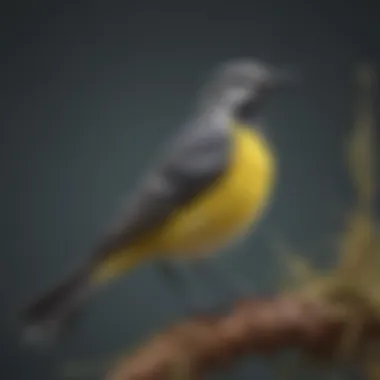
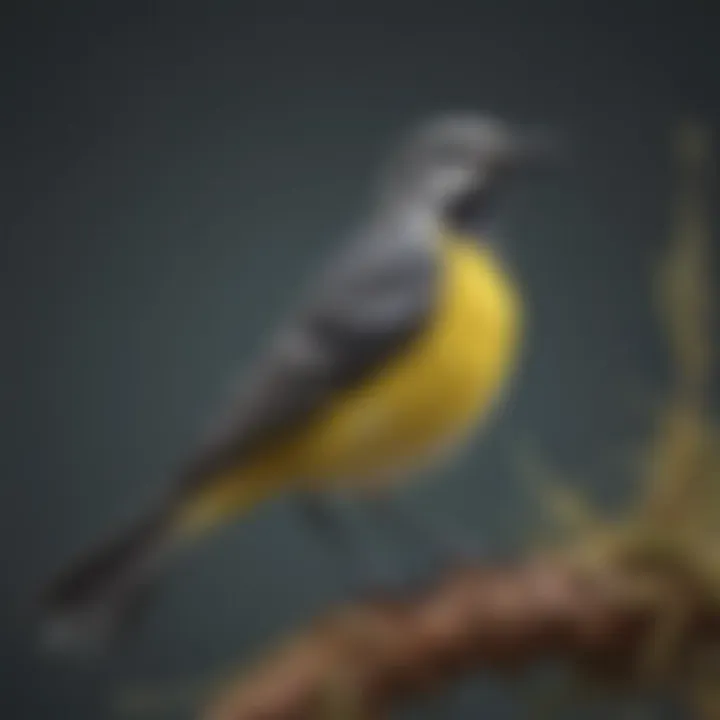
A profound exploration of wagtails' Feeding Behavior necessitates an examination of their Dietary Preferences. Wagtails exhibit a varied diet, consuming a plethora of insects, small invertebrates, and even seeds. Their dietary flexibility aligns with their widespread distribution across different habitats, showcasing their capability to capitalize on diverse food sources. By dissecting their dietary preferences, we unravel the intricate interplay between wagtail physiology and ecological resources.
Foraging Techniques
Delving further, we investigate the Foraging Techniques employed by wagtails in securing their sustenance. From agile aerial maneuvers to ground-level hunting, wagtails employ a range of foraging tactics to procure food efficiently. Their specialized techniques highlight the evolutionary adaptations that have honed wagtails into adept predators. Exploring the nuances of wagtail foraging unveils the remarkable strategies these avian marvels employ to survive and thrive in a competitive natural landscape.
Behavioral Insights
In this section, we delve deep into the behavioral insights of wagtails, shedding light on their interactions and habits. Understanding the behavioral patterns of these avian creatures provides valuable insights into their adaptation and survival strategies. By observing how wagtails communicate, mate, and interact with their environment, researchers and enthusiasts can gain a profound understanding of these enigmatic birds. Exploring the intricate details of wagtail behavior allows us to appreciate the complexity and intelligence of these fascinating creatures.
Communication
Vocalizations
Exploring the realm of vocalizations in wagtails reveals a striking feature of their communication. The diverse range of vocalizations exhibited by wagtails serves a crucial role in expressing emotions, signaling danger, and establishing territories. The unique melodies and calls of wagtails contribute to their social structure and overall survival in the wild. Understanding the nuances of wagtail vocalizations enables researchers to decode their messages and decipher the intricate means of avian communication.
Social Interactions
Unraveling the intricacies of social interactions among wagtails unveils a dynamic aspect of their behavior. Observing how wagtails engage with each other in pairs or groups offers valuable insights into their hierarchies, bonding mechanisms, and cooperative strategies. The social dynamics within wagtail communities play a vital role in their cohesive existence and successful breeding. Studying the social interactions of wagtails sheds light on their adaptive abilities and communal behavior patterns, enriching our understanding of these captivating avian creatures.
Reproductive Strategies
In this section, we explore the reproductive strategies employed by wagtails, emphasizing their nesting behavior and mating rituals. The reproductive tactics adopted by wagtails reveal intriguing insights into their choices of partners, nest-building techniques, and courtship displays. Examining how wagtails reproduce and ensure the survival of their offspring offers a glimpse into their evolutionary adaptation and biological imperatives. Analyzing the nesting behavior and mating rituals of wagtails provides a comprehensive view of their reproductive success and offspring rearing practices.
Nesting Behavior
Delving into the realm of nesting behavior uncovers the meticulous approach of wagtails towards creating safe and secure homes for their young. The intricate construction of nests, selection of nesting sites, and parental care exhibited by wagtails showcase their dedication to ensuring the well-being of their hatchlings. Understanding the nuances of wagtail nesting behavior offers valuable insights into their resourcefulness, creativity, and protective instincts as responsible avian parents.
Mating Rituals
Exploring the enchanting world of wagtail mating rituals unveils a fascinating spectacle of courtship displays and bonding rituals. The elaborate dances, songs, and behaviors exhibited by wagtails during mating season highlight their reproductive prowess and genetic fitness. Observing the intricacies of wagtail mating rituals provides a glimpse into their species-specific behaviors, mate selection criteria, and breeding success. Studying the mating rituals of wagtails enriches our knowledge of their reproductive strategies and evolutionary importance in the avian kingdom.
Conservation Status
Conservation status is a critical aspect of this article as it delves into the preservation of wagtail species in the face of environmental challenges and human activities. Understanding the Conservation Status of wagtails is paramount for ensuring the sustainability of these avian wonders in the wild. By shedding light on the conservation efforts and interventions, this section aims to create awareness and promote initiatives that safeguard wagtail populations for future generations. The Conservation Status segment underscores the essential role of local and global conservation strategies in protecting the habitats and livelihoods of wagtails. It emphasizes the need for collective action and environmental stewardship to mitigate threats and ensure the long-term survival of these unique birds.
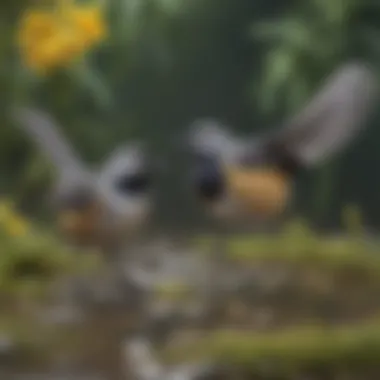
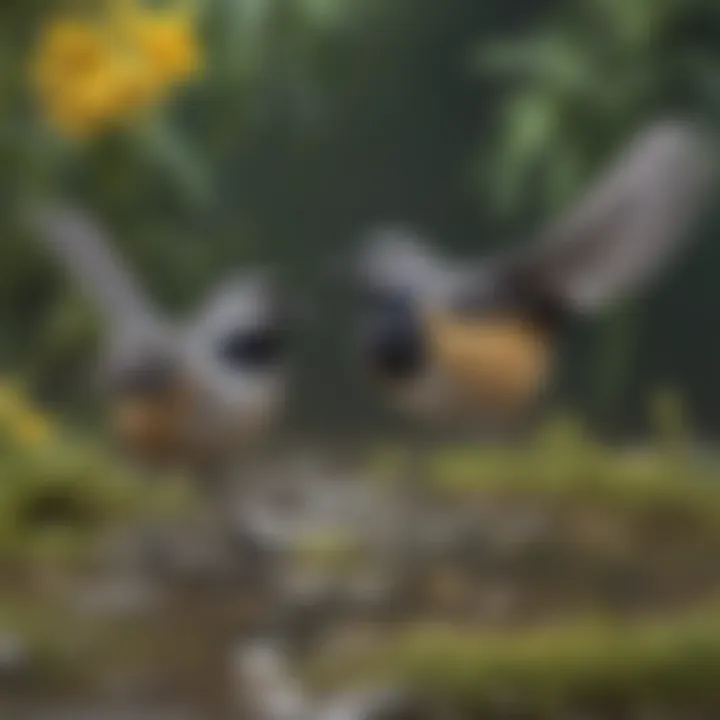
Threats to Wagtails
Habitat Loss
Habitat loss poses a grave threat to wagtails by directly impacting their natural environments and nesting grounds. The accelerating rate of deforestation, urbanization, and land conversion encroaches on wagtail habitats, depriving them of essential resources for survival. The ongoing destruction of wetlands, forests, and grasslands diminishes the availability of suitable breeding sites and food sources for wagtails. The loss of biodiversity and fragmentation of habitats exacerbate the vulnerability of wagtails to predators and environmental stressors, endangering their population dynamics. Habitat loss remains a pervasive challenge that demands immediate conservation actions to mitigate its detrimental effects on wagtails.
Climate Change Impact
Climate change exerts a profound influence on wagtail populations by disrupting their migratory patterns, altering food availability, and increasing environmental vulnerabilities. The shifting climatic conditions, including extreme weather events and temperature fluctuations, pose significant challenges to wagtails' ability to adapt and thrive in their habitats. The escalating impacts of climate change, such as habitat degradation, unpredictable food sources, and ecosystem disruptions, pose grave risks to the long-term survival of wagtails. Addressing the burgeoning climate change impact on wagtails requires concerted efforts to mitigate carbon emissions, implement sustainable practices, and protect critical habitats to ensure the resilience of wagtail populations in a changing environment.
Conservation Efforts
Protected Areas
Protected areas play a pivotal role in safeguarding wagtail habitats and promoting their conservation across diverse landscapes. Designated sanctuaries, reserves, and wildlife refuges offer critical protection to wagtails, providing safe havens for breeding, foraging, and roosting activities. These protected areas serve as essential corridors for wagtail migration and dispersal, facilitating genetic diversity and population sustainability. By preserving ecologically significant areas and implementing effective management strategies, protected areas contribute to the long-term viability of wagtail populations and ecosystems. The establishment and maintenance of protected areas are vital components of conservation efforts aiming to mitigate threats and ensure the persistence of wagtails in the wild.
Community Initiatives
Community initiatives play a pivotal role in engaging local stakeholders, raising awareness, and fostering grassroots participation in wagtail conservation. Collaborative efforts involving communities, conservation organizations, and government entities are essential for implementing sustainable practices and conservation measures that benefit wagtails and their habitats. Community-led initiatives encompass conservation education, habitat restoration, monitoring programs, and advocacy campaigns aimed at empowering individuals and communities to protect wagtails. The involvement of local communities in conservation activities not only enhances the effectiveness of initiatives but also instills a sense of stewardship and responsibility towards preserving wagtails and their natural environments. Leveraging community-driven conservation efforts is fundamental to achieving the overarching goal of safeguarding wagtails for future generations.
Future Prospects
Research Opportunities
Genetic Studies
Genetic studies offer a groundbreaking approach to unraveling the mysteries of wagtails. By examining the underlying genetic makeup of these avian wonders, researchers gain valuable insights into their evolutionary history, population dynamics, and adaptive traits. The distinct advantage of genetic studies lies in their ability to uncover hidden relationships, genetic diversities, and hereditary factors that influence wagtail behavior and ecology. Despite their complexity, genetic studies provide an invaluable tool for deciphering the genetic code of wagtails and unlocking a wealth of information that enriches our understanding of these enigmatic creatures.
Behavioral Observations
Behavioral observations play a vital role in elucidating the intricate behaviors and social dynamics of wagtails. By meticulously observing their daily interactions, mating rituals, and communication patterns, researchers gain a profound understanding of wagtail behavioral ecology. The key characteristic of behavioral observations lies in their ability to capture real-time data on wagtail behaviors, offering a nuanced perspective on their cognitive abilities, territoriality, and foraging strategies. While behavioral observations require patience and meticulous attention to detail, they provide a holistic view of wagtail behavior that enhances our comprehension of their complex social structures and adaptive behaviors.
Technological Advancements
Tracking Devices
The integration of tracking devices revolutionizes the field of wagtail research by enabling precise tracking of their movement patterns, migration routes, and habitat preferences. By attaching tracking devices to individual wagtails, researchers can monitor their spatial behaviors, migratory destinations, and nesting sites with exceptional accuracy. The key characteristic of tracking devices lies in their ability to provide real-time data on wagtail movements, facilitating comprehensive studies on their migration ecology and spatial distribution. While tracking devices offer unparalleled insights into wagtail movements, they also pose challenges related to battery life, data transmission, and device size that researchers must address to optimize their research outcomes.
Remote Monitoring
Remote monitoring emerges as a cutting-edge tool for studying wagtail populations in remote or inaccessible locations. By deploying remote monitoring systems equipped with cameras or sensors, researchers can remotely observe wagtail activities, breeding behaviors, and habitat usage without disturbing their natural environment. The unique feature of remote monitoring lies in its non-invasive approach to studying wagtails, allowing researchers to collect data discreetly and minimize human interference in their ecological studies. While remote monitoring offers numerous advantages in terms of data collection and species conservation, it also presents challenges such as equipment maintenance, data analysis, and ethical considerations that researchers need to address for successful implementation.



